Should an anti-static mat be connected to earth directly or with 1E6 ohm resistance in between?
2 layer mat. Upper side: dissipative (10E7 ~ 10E10 ohm/m²). Bottom: conductive.
To be a little more precise: connection to earth will be thru a CGP (common ground point) which is at earth potential. So, 1E6 ohm resistance or not, between mat and CGP?
In response to Lorenzo Donati: so, the workstation environment explained in Op Amp Applications Handbook, chapter 7, page 95, looks like this:
Why not the following setup? Note the wrist strap grounding, which i edited from the original image.
Now, instead of 2E6 ohm resistance to earth, there is 1E6 ohm between the wrist strap and earth. Is this enough?
Page 96: "Again, a 1E6 ohm, from the wrist strap to ground, is required for safety".



